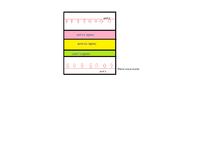Mona7150
Member level 1
Hello all,
I have to determine S11 and S21 for a planar multilayered structure ( different layers with different permitivities stacked on each other). The thickness of different layers is fixed only in one dimension(say Z-axis,total thickness in Z direction is almost 150mm). My frequency of operation is around 403MHz. I tried doing it with CST and HFSS but since they are 3D software so I am not able to understand what thickness should be kept in the other two axis(x and y axis) because the results change as I change these dimensions. Moreover do I need to make some changes in mesh settings?
Can anybody please suggest some other way of solving the problem?
Thank You
I have to determine S11 and S21 for a planar multilayered structure ( different layers with different permitivities stacked on each other). The thickness of different layers is fixed only in one dimension(say Z-axis,total thickness in Z direction is almost 150mm). My frequency of operation is around 403MHz. I tried doing it with CST and HFSS but since they are 3D software so I am not able to understand what thickness should be kept in the other two axis(x and y axis) because the results change as I change these dimensions. Moreover do I need to make some changes in mesh settings?
Can anybody please suggest some other way of solving the problem?
Thank You
